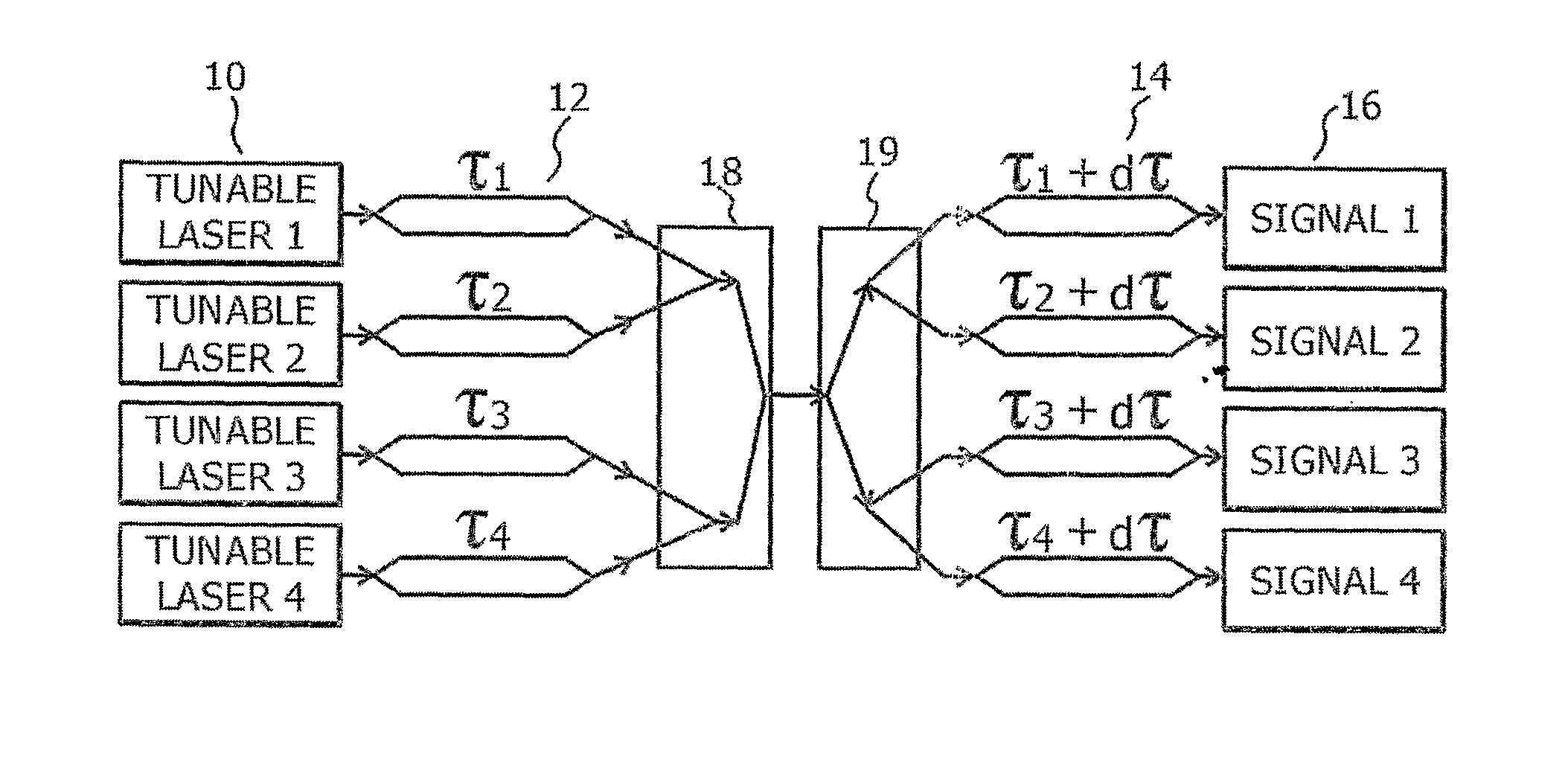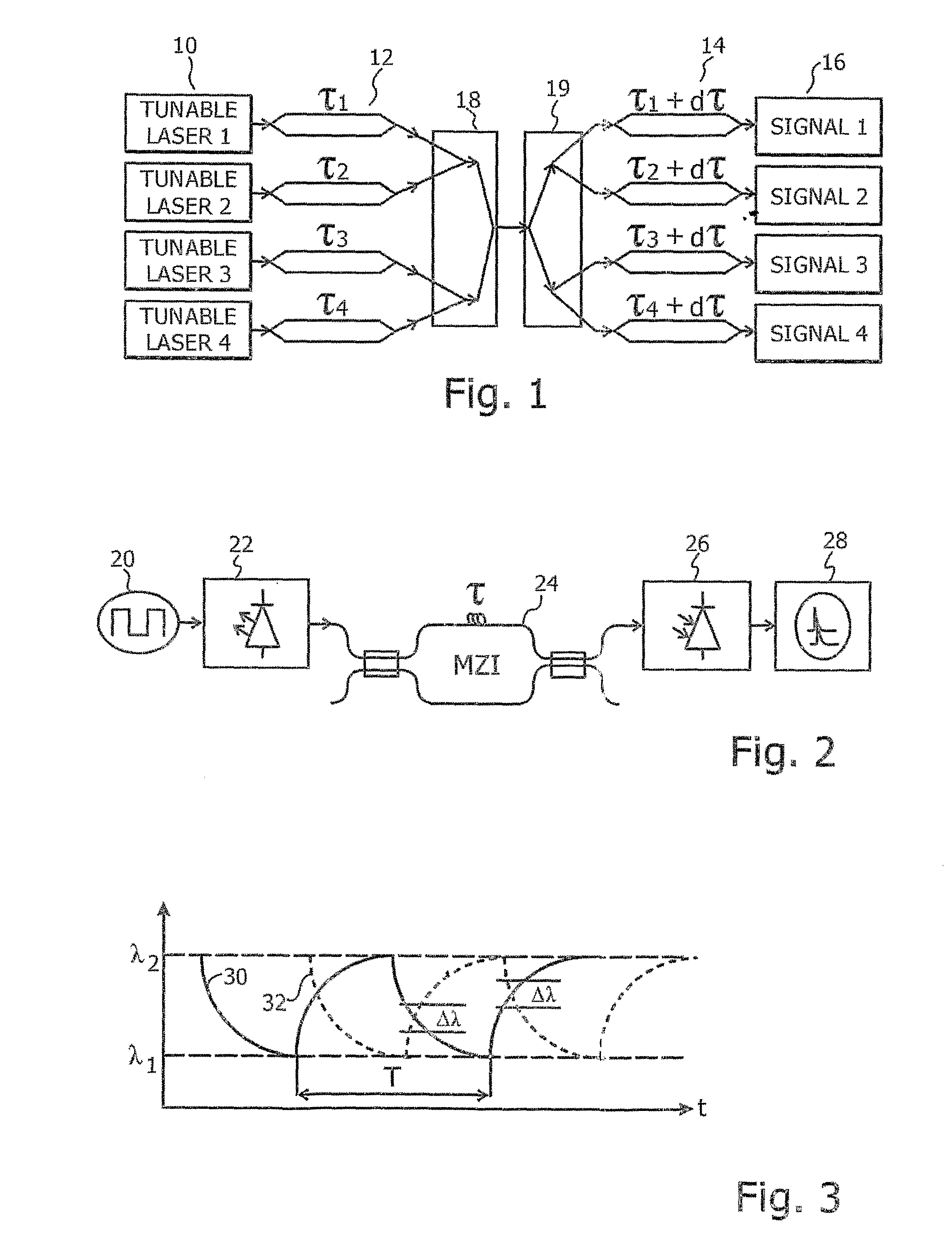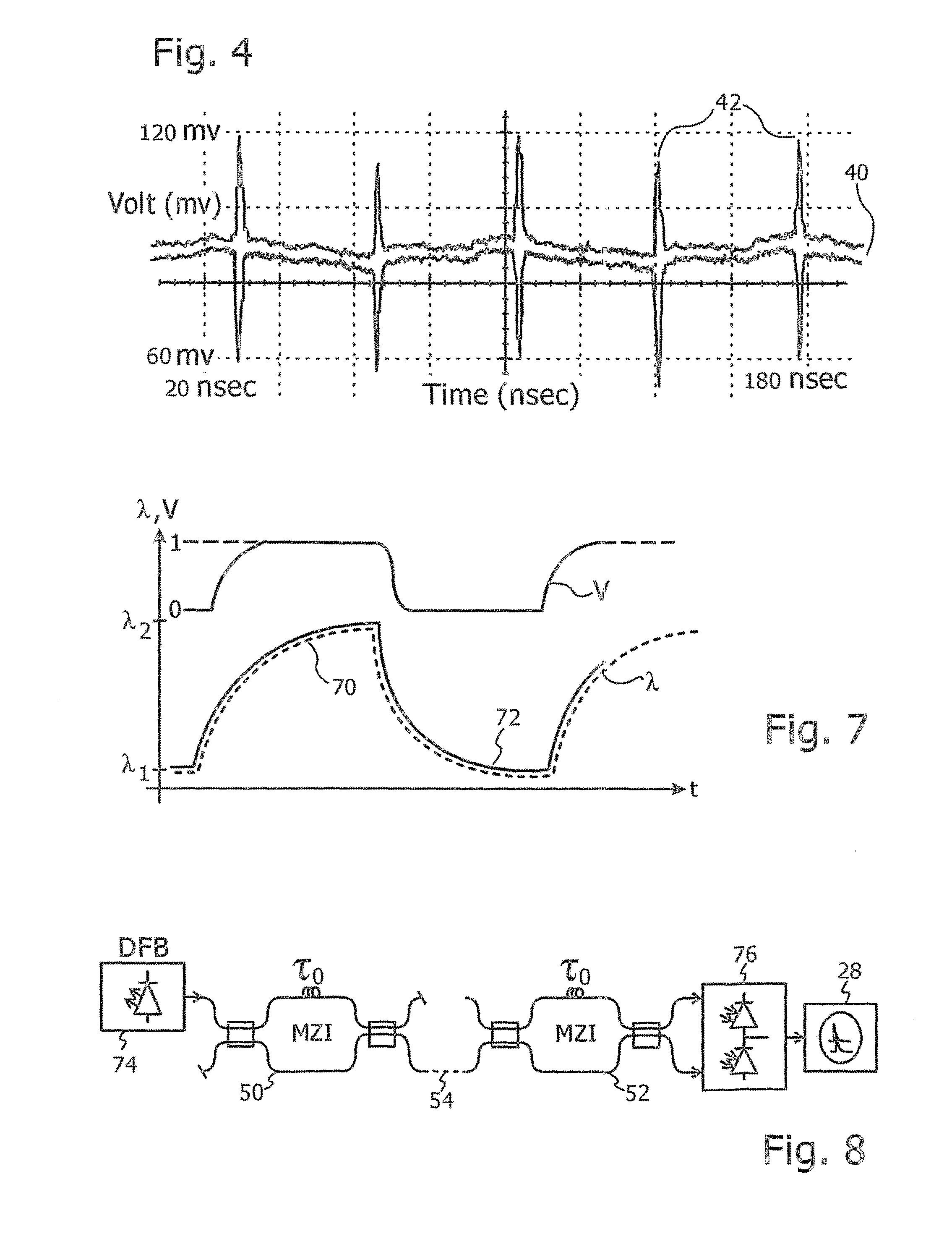Optical CDMA by Self Heterodyne Filtering
a filtering method and heterodyne technology, applied in the field of optical code division multiple access systems, can solve the problems of large bandwidth required by spectrum spreading, imposing a strong limitation on transmission distance,
- Summary
- Abstract
- Description
- Claims
- Application Information
AI Technical Summary
Benefits of technology
Problems solved by technology
Method used
Image
Examples
Embodiment Construction
[0047]Reference is now made to FIG. 1, which illustrates schematically a block diagram of an OCDMA system, constructed and operative according to a first preferred embodiment of the present invention, and which illustrates the basic operation of the OCDMA method of the present invention. The preferred embodiment of FIG. 1 comprises only 4 communication channels, but it is to be understood that a practical system may comprise many more channels, and the invention is not intended to be limited only to 4 channels. The transmitter of each communication channel consists of a laser 10, which can be of any common type, such as DBR, GCSR, DFB, FP, VCSEL, MQW, such as are known in the art, and an optical multiplexer 12, while each receiver includes an optical demultiplexer 14 and a regular PIN photodiode detector 16. The outputs of all of the transmitter channels are combined, preferably by means of an optical passive star 18, for dispatch over the transmission medium, and are then distribut...
PUM
 Login to View More
Login to View More Abstract
Description
Claims
Application Information
 Login to View More
Login to View More - R&D
- Intellectual Property
- Life Sciences
- Materials
- Tech Scout
- Unparalleled Data Quality
- Higher Quality Content
- 60% Fewer Hallucinations
Browse by: Latest US Patents, China's latest patents, Technical Efficacy Thesaurus, Application Domain, Technology Topic, Popular Technical Reports.
© 2025 PatSnap. All rights reserved.Legal|Privacy policy|Modern Slavery Act Transparency Statement|Sitemap|About US| Contact US: help@patsnap.com



